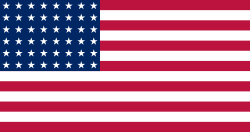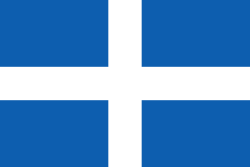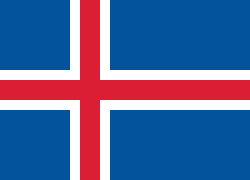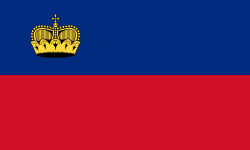Vinter-OL 1956
De olympiske ringe ved vinter-OL 1956. | |
| Værtsby | |
|---|---|
| Deltagende lande | 32 |
| Deltagende atleter | 821 (687 mænd, 134 kvinder) |
| Discipliner | 24 i 4 sportsgrene (8 discipliner) |
| Åbnings- ceremoni | 26. januar |
| Afslutnings- ceremoni | 5. februar |
| Officielt åbnet af | Præsident Giovanni Gronchi |
| Atletløfte | Giuliana Chenal-Minuzzo |
| Fakkelbærer | Guido Caroli |
| Stadion | Stadio Olympica |
Vinter-OL 1956 blev afholdt i Cortina d'Ampezzo i Italien. Bedste nation blev Sovjetunionen med 7 guldmedaljer.
Medaljestatistik
Medaljefordelingen ved vinter-OL 1956 Nr. Land Guld Sølv Bronze Total 1  Sovjetunionen
Sovjetunionen7 3 6 16 2  Østrig
Østrig4 3 4 11 3  Finland
Finland3 3 1 7 4  Schweiz
Schweiz3 2 1 6 5  Sverige
Sverige2 4 4 10 6  USA
USA2 3 2 7 7  Norge
Norge2 1 1 4 8  Italien
Italien1 2 0 3 9  Tyskland
Tyskland1 0 1 2 10  Canada
Canada0 1 2 3 11  Japan
Japan0 1 0 1 12  Polen
Polen0 0 1 1  Ungarn
Ungarn0 0 1 1 Total 25 23 24 72
Deltagende nationer
Legene havde deltagelse af følgende 32 nationer:
|
Bolivia, Iran og Sovjetunionen deltog i olympiske vinterlege for første gang.
Ishockey
Den olympiske ishockeyturnering blev spillet på isstadion i Cortina d'Ampezzo, og den gjaldt samtidig som det 23. verdensmesterskab i ishockey. For de europæsike hold gjaldt der endvidere som det 34. EM i ishockey. Turneringen blev spillet den 26. januar – 4. februar 1956.
De 10 deltagende hold spillede først en indledende runde i tre grupper, hvorfra de to bedste i hver gruppe gik videre til finalerunden om 1.-6.pladsen, mens de sidste fire hold spillede videre i placeringsrunden om pladserne 7-10.
Sovjetunionen vandt OL-guld for første gang, og det var samtidig det sovjetiske holds anden VM-titel. USA vandt overraskende sølv, men for de femdobbelte olympiske mestre fra Canada rakte indsatsen denne gang sensationelt kun til bronze.
Kvalifikation
Et tysk hold var kvalificeret til at deltage i turneringen, så de to tyske landshold spillede en udtagelseskamp om OL-pladsen. Kampen blev spillet den 16. november 1955 i Østberlin, og den blev vundet 7-3 af Vesttyskland.
Indledende runde
De 10 lande var inddelt i tre grupper. De to bedste fra hver gruppe gik videre til finalerunden, mens de øvrige hold fortsatte i placeringsrunden.
Gruppe A
Gruppe B
|
|
Gruppe C
|
|
Finalerunde
De to bedste fra hver indledende gruppe gik videre til finalerunden.
|
|
Placeringsrunde
De fire hold, der ikke gik videre til finalerunden, spillede placeringsrunde om pladserne 7-10.
|
|
Samlet rangering
|
| ||||||||||||||||||||||||||||||||||||||||
Kilder
- IOC – Cortina d'Ampezzo 1956 (officiel hjemmeside)
- Officiel rapport (PDF, 26 MB)
| ||||||||||||||||||
| Wikimedia Commons har medier relateret til: |
|
Koordinater: 46°32′39″N 12°07′57″Ø / 46.544167°N 12.1325°Ø
Medier brugt på denne side
Olympic Rings without "rims" (gaps between the rings), As used, eg. in the logos of the 2008 and 2016 Olympics. The colour scheme applied here was specified in 2023 guidelines.
Olympic Rings without "rims" (gaps between the rings), As used, eg. in the logos of the 2008 and 2016 Olympics. The colour scheme applied here was specified in 2023 guidelines.
Flag of Austria with the red in the Austrian national colours which was official ordered within the Austrian Armed Forces (Bundesheer) in the characteristic “Pantone 032 C” (since May 2018 the Red is ordered in the characteristic “Pantone 186 C”.)
Finlands flag
US Flag with 48 stars. In use for 47 years from July 4, 1912, to July 3, 1959.
| Flag of Bolivia* | |
|---|---|
| country | Template:I18n/Republic of Bolivia |
| anvendes af | Bolivia |
| fra | 1851 |
| til | Present |
| oprettet af | Government of Bolivia |
| format | 15:22 |
| form | rectangular |
| farver | rød, gul, grøn
flag has 3 horizontal stripes |
| other characteristics | A horizontal tricolor of red, yellow and green. |
Det er let at give dette billede en kant
Flag of Iran. The tricolor flag was introduced in 1906, but after the Islamic Revolution of 1979 the Arabic words 'Allahu akbar' ('God is great'), written in the Kufic script of the Qur'an and repeated 22 times, were added to the red and green strips where they border the white central strip and in the middle is the emblem of Iran (which is a stylized Persian alphabet of the Arabic word Allah ("God")).
The official ISIRI standard (translation at FotW) gives two slightly different methods of construction for the flag: a compass-and-straightedge construction used for File:Flag of Iran (official).svg, and a "simplified" construction sheet with rational numbers used for this file.
Flag of the Socialist Federal Republic of Yugoslavia (1946-1992).
The design (blazon) is defined in Article 4 of the Constitution for the Republic of Yugoslavia (1946). [1]
Flag of Liechtenstein
Flag of Hungary from 20 August 1949 to 12 November 1956.
Flag of Romania, (21 August 1965 - 22 December 1989/officialy 27 December 1989).

Construction sheet of the Flag of Romania as depicted in Decree nr. 972 from 5 November 1968.
- l = 2/3 × L
- C = 1/3 × L
- S = 2/5 × l
The Canadian Red Ensign used between 1921 and 1957.
This image has compared for accuracy (mainly colors) using an image from World Statesmen. The only change is making the maple leaves green from red. This image has compared for accuracy (mainly colors) using an image from World Statesmen. The most recent version of this image has changed the harp into one with a female figure; see [http://flagspot.net/flags/ca-1921.html FOTW
Flag of the unified Team of Germany for the Olympic Games, 1960–1968.


































